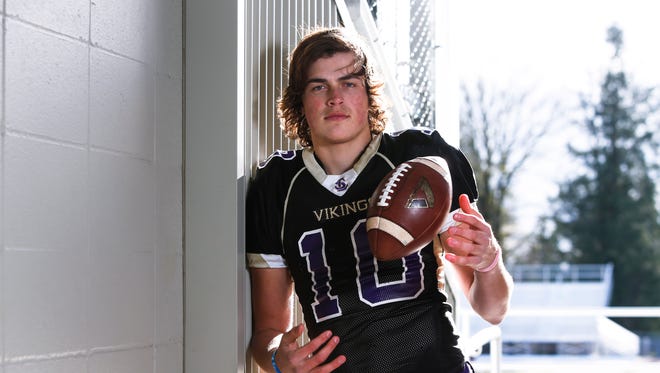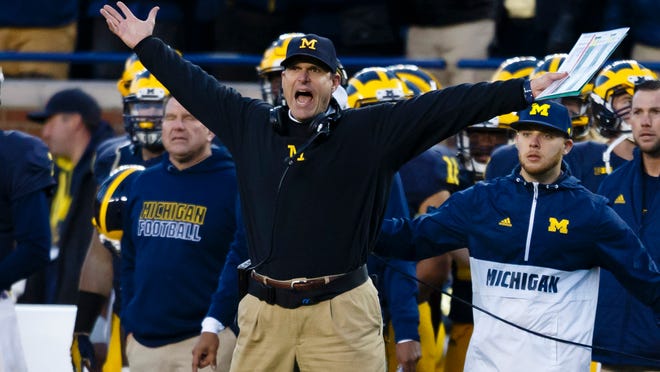What Is a Blue Shirt in College Football
Twenty-five prospective student-athletes signed with Ohio State's football program last February, part of a recruiting class ranked by most major services as one of the best in college football.

Of this group, just four saw action during the Buckeyes' 2015 regular season. The rest of the signing class participated in every team activity, from practice through film study, but did not play in a single game, maintaining a season of eligibility while acclimating themselves to their new surroundings.
It's a process known as redshirting, and it's the most common tool used by coaches and programs to prepare student-athletes unfamiliar with a far higher level of competition.
Some incoming recruits are simply too good to redshirt: Alabama wide receiver Calvin Ridley and defensive back Minkah Fitzpatrick played crucial roles in the Crimson Tide's most recent national championship, for example. Some new arrivals avoid a redshirt season out of necessity, to fill a void on the roster.
Football recruiting is unstable, as Jim Harbaugh shows, even when unintended
Though recruiting breeds superlatives — the best class, best player, best positional group — it also overbuilds expectations. Ridley, for example, is the exception. Most incoming recruits escape notice, spending their first seasons on campus not as irreplaceable contributors but in developmental roles.
Those prospects who officially join Football Bowl Subdivision programs on national signing day can be split into two distinct groups: those who will play from the start and those who won't. You can separate this group further by the color of their shirts.
There are redshirts, greenshirts, grayshirts and blueshirts. Each term is used to define an incoming student-athlete's eligibility status, as well as how an individual program views a prospect's ability to contribute in the immediate and long term.
Players who redshirt are able to participate in every team function minus the games themselves; a player who plays in a single game will lose his redshirt status. By taking a redshirt, players are given five years to complete their four seasons of on-field eligibility.
There are exceptions, as in the case of injury. Should a player suffer a season-ending injury before certain criteria are met — before the start of the second half of the season and before he competes in three games, for example — he can petition for a medical hardship waiver, which is awarded by the NCAA.
Former Virginia Tech defensive tackle Luther Maddy, a likely mid-round pick in this year's NFL draft, was given an additional year of eligibility after missing all but four games of the 2014 season because of a knee injury.
Greenshirt recruits are those who enroll one semester ahead of schedule and join an FBS program for the start of the spring term in January. Typically, greenshirts are the most likely to earn immediate playing time as a true freshman.
There are two reasons for this. For starters, the ability to enroll early places greenshirt recruits ahead of the curve, giving them time to acclimate to campus, participate in spring practice, to fully digest an offensive or defensive scheme and the opportunity to develop in a team's strength and conditioning program. Greenshirts are also very often among the nation's best prospects at their respective positions, eyeballed far in advance by FBS programs as recruits capable of making an immediate impact as true freshmen.
Greenshirts in this year's recruiting cycle include Georgia quarterback Jacob Eason, Ohio State defensive end Jonathon Cooper, Auburn wide receiver Kyle Davis and Alabama offensive tackle Jonah Williams.
Grayshirts are recruits who are offered a delayed scholarship. Essentially, grayshirts will postpone their enrollment until after the conclusion of the upcoming season; they will take classes, often as part-time students, but not officially join the program until the ensuing spring semester.
Where top uncommitted recruits will be on final weekend
Schools use the grayshirt to add recruits without sacrificing scholarship numbers. Though a grayshirt graduates at the same time as other prospects, delaying the player's enrollment allows a program to count that scholarship offer toward the following season's total — making the grayshirt a helpful tool for those programs who tend to over-sign recruits.
Arizona will add four grayshirts to their official roster this spring. All four — defensive back Antonio Parks, tight end Jamie Nunley and offensive linemen Keenan Walker and Harper Sherman — signed national letters of intent with the Wildcats last winter but delayed their official enrollment until January.
Meanwhile, blueshirts represent the newest loophole for FBS programs to accumulate depth while not affecting their annual numbers. Like grayshirt recruits, blueshirts are counted toward the next season's scholarship total.
There is one distinct difference, however. Unlike grayshirts, a blueshirt is able to enroll and participate in team events in the fall. This allows programs to get the best of both worlds: FBS schools can delay a scholarship for the following year, allowing them to over-sign beyond the 25-scholarship limit, and get the use of a prospect immediately rather than waiting until the following spring.
The use of a blueshirt was first popularized by New Mexico State, which would support its numbers by enrolling prospects right after the beginning of the fall semester and then place them on scholarship. Tennessee has also embraced the use of blueshirts under coach Butch Jones.
GALLERY: PROJECTING THE TOP 25 FOR 2016

Source: https://www.usatoday.com/story/sports/ncaaf/recruiting/2016/01/31/college-football-recruiting-redshirt-greenshirt-grayshirt-blueshirt/79603750/
0 Response to "What Is a Blue Shirt in College Football"
Post a Comment